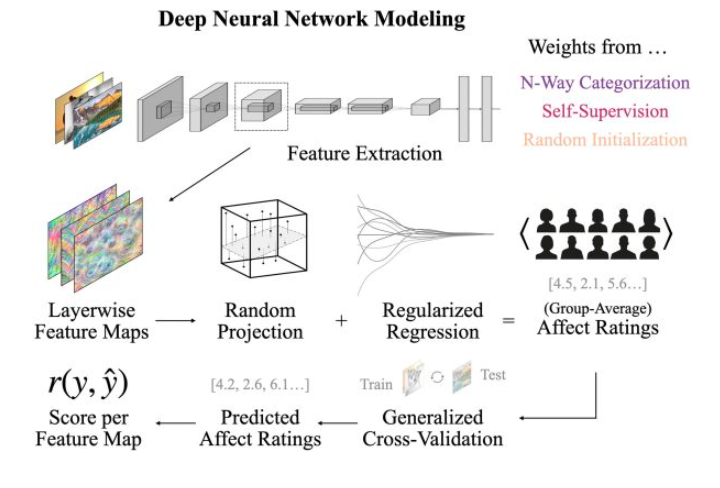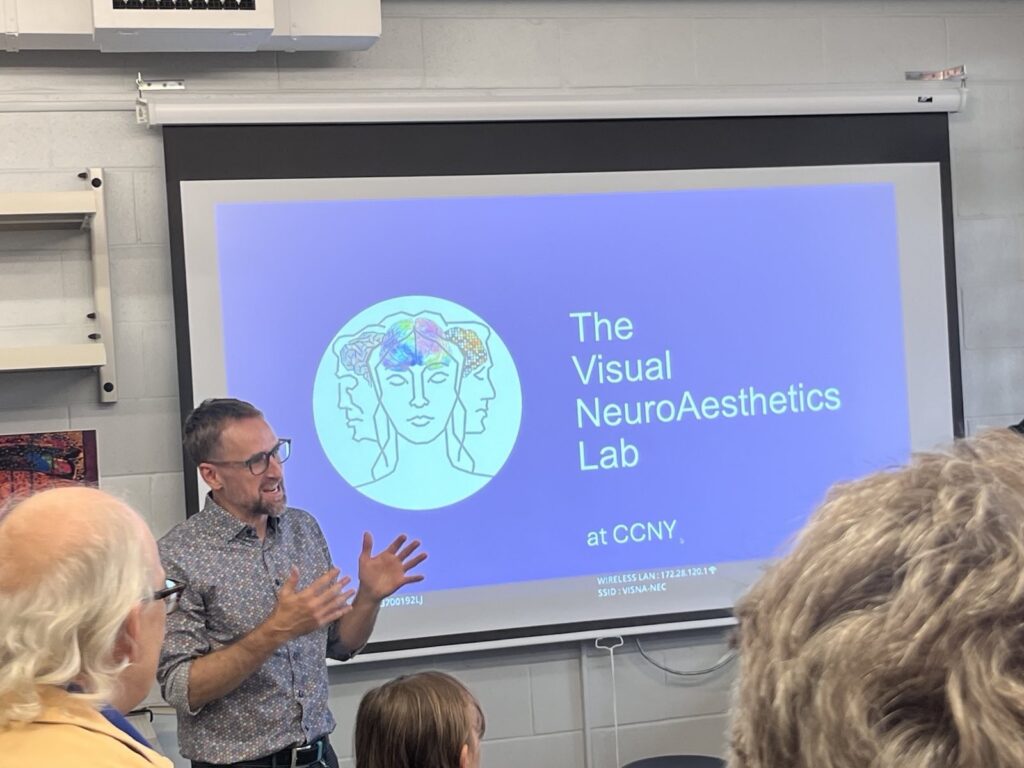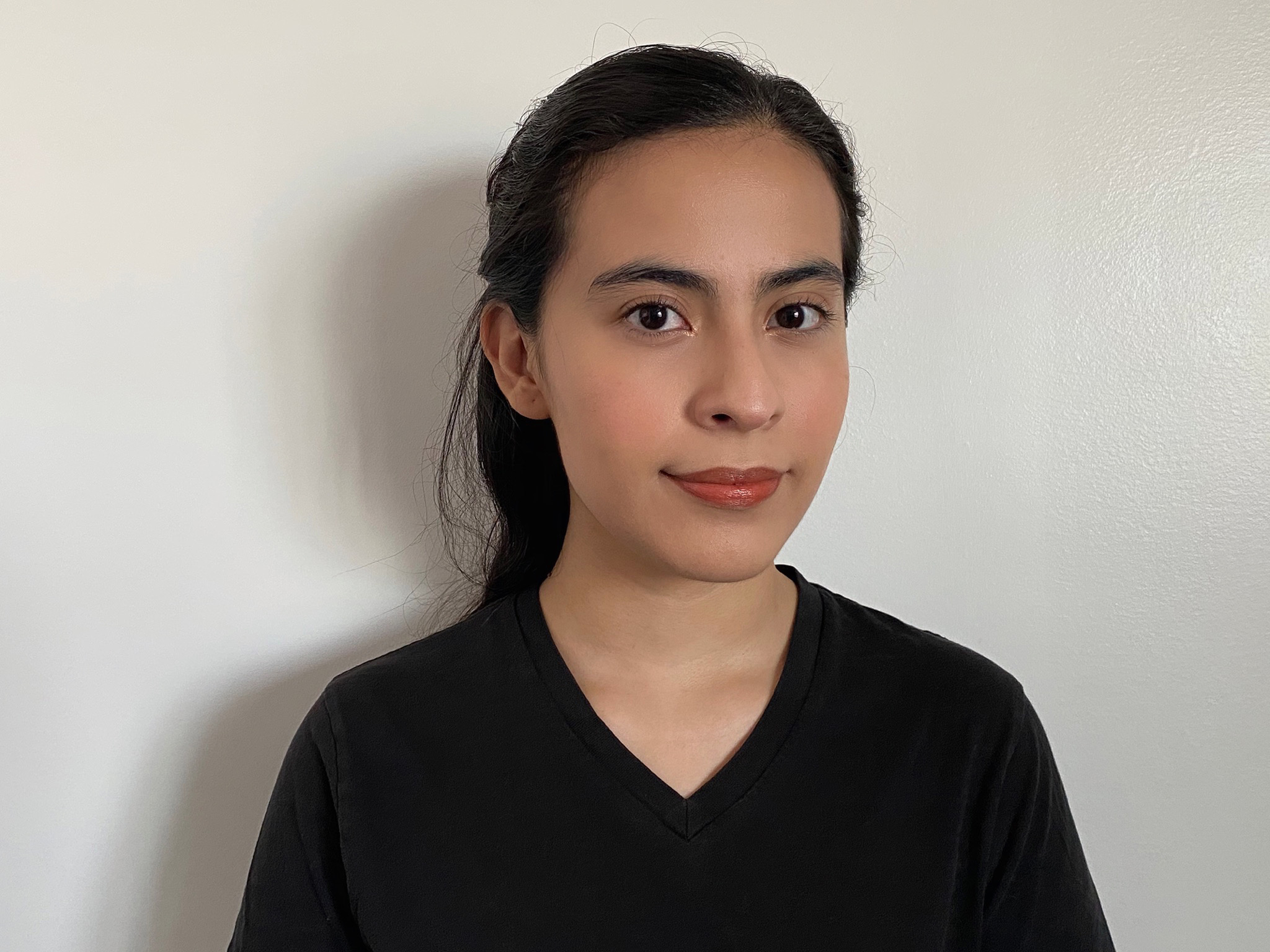What if the way we feel about an image, whether it is outdoor scenery, a city skyline, or a childhood photo, wasn’t just about memory or mood but something deeper in how we see? For Dr. Edward A. Vessel, assistant professor of psychology at CCNY and director of the VisNa Lab, that inquiry has guided years of research and his latest study offers a surprising answer.

Dr. Edward A. Vessel. Photo Credit: Courtesy of Dr. Vessel.
Vessel, a cognitive and computational neuroscientist, is the co-author of a recent study published in the Proceedings of the National Academy of Sciences (PNAS) titled “The Perceptual Primacy of Feeling: Affectless machine vision models explain a majority of variance in human visually evoked affect.” The paper explores how computer models trained only to identify the content of an image can also predict human emotional responses without ever being taught to recognize emotion.
“When the brain learns to perceive things, it builds up a big probabilistic model of perceptual knowledge,” Vessel explained. “Somehow, even without training on affective information, the features that the perceptual parts of the brain learn are sufficient for predicting much of people’s affective responses. This suggests that affect may be more perceptual than many might have predicted.”
The findings mark a significant contribution to the growing field of neuroaesthetics, a domain Vessel helped shape through more than a decade of research. “I’ve been working for a long time on trying to understand how our brain gets from a representation of ‘what we see’ to one of ‘what we like,'” Vessel said.
Vessel’s path into neuroscience did not follow a traditional route. As an undergraduate at Johns Hopkins University, he initially enrolled as a pre-med student before discovering cognitive science. “Even after taking classes in the degree for a year, I don’t know that I could have given you a good definition of cognitive science, but I was really enjoying the challenge!” Vessel said.
His research focus sharpened during his doctoral work at the University of Southern California, where his curiosity in object recognition shifted toward “visual pleasure.” He later pursued a postdoctoral fellowship at New York University. He collaborated with researchers across disciplines, including Gabi Starr, a scholar of 18th-century aesthetics, to establish new frameworks for understanding the emotional power of images.

A paper figure of the project. Photo Credit: VisNa Lab website.
After spending over six years in Germany directing a research group at the Max Planck Institute for Empirical Aesthetics, Vessel returned to New York in 2022 to join CCNY’s Psychology Department.
“Luckily, CCNY Psychology was looking for a computationally minded cognitive neuroscientist, and we were a good match,” Vessel said. “I was excited about the opportunity to work with CCNY students and to bring a focus on computational cognitive neuroscience to my classes and research.”
The PNAS-published study grew out of collaborations with colleagues Dan Graham, Colin Conwell, and Chelsea Boccagno. What began as a theoretical exercise in applying deep neural networks (DNNs) to predict aesthetic responses quickly became a comprehensive study comparing multiple models across datasets and AI models.
“What is really unique about what we found is that we didn’t actually train our DNNs to predict affective responses,” Vessel said. “We trained them to categorize images … Nothing about this task is emotional or affective. But then, using this set of perceptual features, we were able to predict average ratings of beauty, valence, and arousal.”
In other words, simply by learning what’s in an image, a machine can begin to understand how we feel about it. The finding challenges long-held ideas about how emotion and perception work and emphasizes the connection between seeing and feeling. The publication has been a validating moment for Vessel and his co-authors. “It was a lot of effort, and we thought the results were super cool, but you never know how others are going to see your work,” Vessel said. “I think the success of this paper reflects the fact that the field of neuroaesthetics has come a long way.”

Dr. Vessel presenting at the 2024 VisNa “Lab Warming” event. Photo Credit: Courtesy of Dr. Vessel.
Looking ahead, Vessel is excited to expand his research and explore a different approach in the data-gathering process. “The next big thing for my lab is to move from understanding the average aesthetic ratings of a bunch of people to trying to understand aesthetic ratings of single individuals, who may have very different personal biographies of visual experience,” Vessel explained.
However, for Vessel, it’s not just only about expanding his research; it’s also about motivating the next generation of thinkers. “It has been both rewarding and challenging to be working at the forefront of a developing field. Now that the field of neuroaesthetics has gained a wider audience and more traction … it’s very gratifying to see the opportunities I’ve helped create for a younger generation of scientists,” Vessel said. “I feel proud to be able to point a path forward for my students’ curiosity.”

Sofia is a graduate student at CUNY Brooklyn College, where she’s pursuing her M.S. in Media Studies. In addition to writing for The RICC, she’s a writer for the features section of Brooklyn College’s student-run newspaper, The Vanguard. She is also a dedicated writer for the Brooklyn News Service.